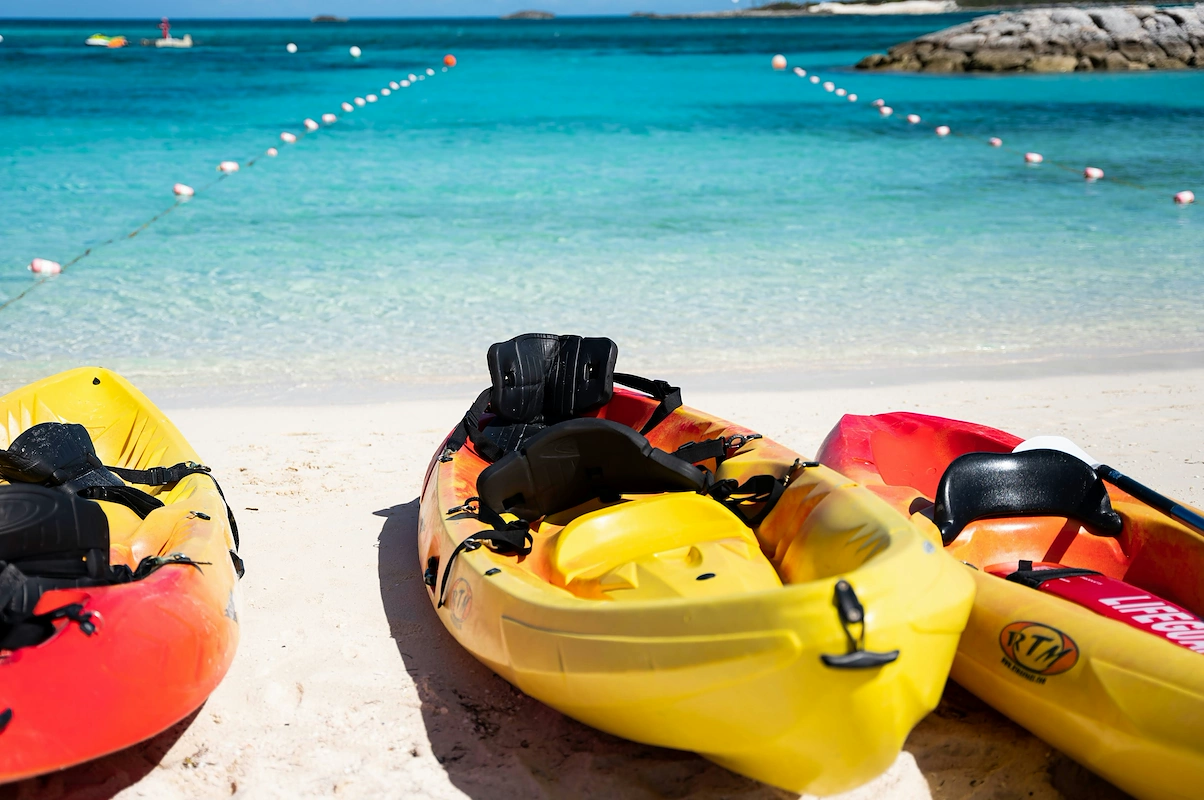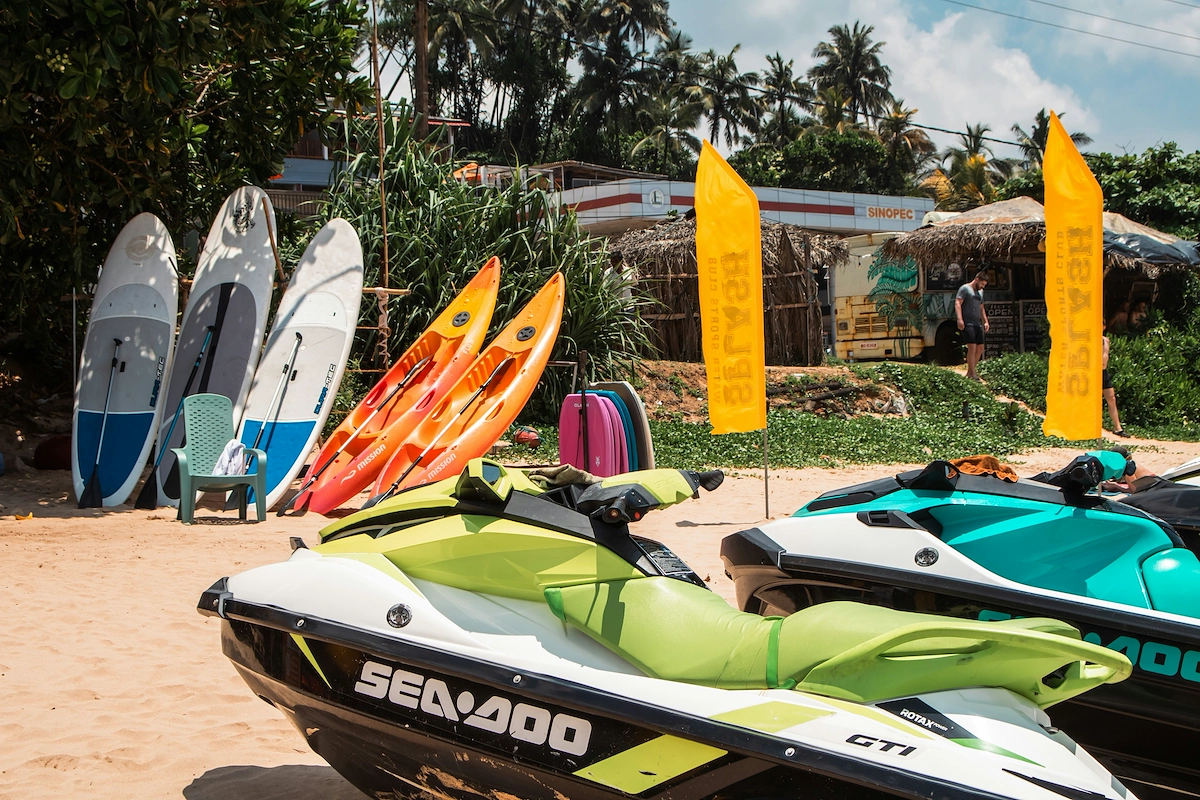Starting a boudoir photography business is a rewarding venture that blends artistic vision and photography skills with sharp business acumen. The market for this personal style of photography is thriving, with consistent demand for sessions celebrating milestones, anniversaries, or as a powerful act of self-love.
This guide will take you through the practical steps of validating your business concept, acquiring the right equipment, obtaining necessary licenses, and securing funding to help you launch a successful boudoir photography business in the U.S.
Step 1: Plan your business and validate your concept
Market and competitor research
First, research your local market. Use Google Trends to check search interest for "boudoir photography" in your city. You can also browse Instagram hashtags like #[YourCity]Boudoir and join local photography Facebook groups to see what services are in demand.
Next, analyze your direct competitors. Find them using the Professional Photographers of America (PPA) directory or a simple Google Maps search. Note their packages and style. Many new photographers make the mistake of undercutting on price; instead, find a unique angle for your brand.
Estimate your startup costs
With a clearer market picture, you can draft a budget. Initial costs often range from $3,800 to over $12,000. Your camera gear and lighting will be a large part of this. You might want to start with one quality camera body and two versatile lenses, like a 50mm and an 85mm.
Here is a typical breakdown of first-year expenses:
- Camera & Lenses: $2,000 - $5,000
- Lighting & Modifiers: $500 - $1,500
- Studio Space & Props: $500 - $3,000
- Business Formation & Insurance: $300 - $700
- Website & Initial Marketing: $500 - $2,000
Here are 3 immediate steps to take:
- Identify five local boudoir photographers and document their package offerings.
- Create a draft startup budget using the estimated cost ranges.
- Use Google Trends to compare search interest for boudoir photography in three potential cities.
Step 2: Set up your legal structure and get licensed
Choose your business structure
First, decide how to structure your business. Most photographers choose a Limited Liability Company (LLC). This protects your personal assets, like your home, if the business is sued. It offers a vital layer of security that a sole proprietorship does not.
An LLC costs between $50 and $500 to file with your state's Secretary of State. The processing time can range from a few days to several weeks. Taxes pass through to your personal return, which simplifies bookkeeping compared to a corporation.
Secure your licenses and permits
Once your structure is set, get your federal tax ID. You can apply for a free Employer Identification Number (EIN) directly from the IRS website. You will receive the number immediately upon completion of the online application.
Next, check state requirements. If you plan to sell prints or albums, you will need a seller's permit to collect sales tax. You must also register a "Doing Business As" (DBA) name if you operate under a name different from your legal one.
Finally, handle local permits. Your city or county clerk’s office issues a general business license, which typically costs $50 to $100 annually. If you run your studio from home, you will likely need a Home Occupation Permit, a one-time fee around $25 to $150.
Here are 3 immediate steps to take:
- Decide between an LLC and a sole proprietorship for your business structure.
- Apply for a free Employer Identification Number (EIN) on the IRS website.
- Check your city clerk’s website for business license and Home Occupation Permit requirements.
Step 3: Secure insurance and manage risk
Find the right coverage
With your legal structure in place, the next move is to protect your business with insurance. You will need a few different policies to cover all your bases. This is not just a formality; it shields you from financial loss and builds client trust.
General liability covers accidents, like a client who trips over a light stand. Professional liability, also called errors and omissions, protects you if a client is unhappy with their photos. You also need equipment insurance to cover your gear against theft or damage.
Many new photographers assume a basic policy is enough, which can be a costly mistake. For boudoir, specific risks include client data privacy and claims of misconduct. You should confirm your professional liability policy explicitly covers these situations.
- General Liability: Aim for $1 million in coverage. Annual premiums often run from $400 to $700.
- Professional Liability: A $1 million policy is standard. Expect to pay $500 to $1,000 annually.
- Equipment Insurance: A policy for a $10,000 kit might cost around $250 per year.
If you hire an assistant or makeup artist, you will also need workers' compensation. A commercial auto policy is necessary if you use a vehicle primarily for business travel.
Choose a provider
You might want to work with an insurer that specializes in photography. Consider providers like Hiscox, Full Frame Insurance, or the policy offered through Professional Photographers of America (PPA). They understand the industry's unique risks better than a general agent.
Here are 4 immediate steps to take:
- Get a quote for a $1 million general liability policy.
- Ask a potential insurer if their professional liability policy covers client data privacy.
- Compare annual premiums from two photography-specific insurers like Hiscox or Full Frame.
- Determine if you need workers' compensation based on your hiring plans.
Step 4: Set up your studio and buy equipment
Find and prepare your studio space
Your studio is where the magic happens. Look for a commercial space between 500 and 800 square feet. This provides enough room for a shooting area, a private changing room, and a small reception spot. A large window for natural light is a huge bonus.
Before you sign a lease, confirm the property’s zoning allows for a photography business. Many new owners overlook this. During negotiations, ask the landlord directly about any restrictions on client foot traffic or signage. Get all approvals in writing to avoid future problems.
Select your core equipment
With your space secured, it is time to get your gear. You do not need the most expensive equipment to start. Focus on reliable pieces that deliver professional results. A full-frame mirrorless camera body, two prime lenses, and a versatile lighting kit will cover most of your needs.
Here is a sample list with average costs:
- Camera Body: A full-frame mirrorless like a Sony A7 III or Canon R6 runs $1,800 - $2,500.
- Lenses: A 50mm f/1.8 lens ($200 - $600) and an 85mm f/1.8 lens ($500 - $900) are perfect for portraits.
- Lighting: A two-light kit, like the Godox AD200 Pro set, costs around $700.
Here are 4 immediate steps to take:
- Research three commercial spaces for lease that are over 500 square feet.
- Draft a list of questions about business restrictions to ask a potential landlord.
- Compare current prices for a full-frame camera body from two different brands.
- Price out a two-light strobe kit with softboxes from a supplier like Adorama or B&H Photo.
Step 5: Set up your payment processing
First, establish your payment terms. Most boudoir photographers require a 50% non-refundable deposit to secure a booking. The remaining balance is typically due one to two weeks before the session. This structure protects your time and commitment.
Always pair your payment request with a signed contract. This document should outline your services, payment schedule, and cancellation policy. It prevents misunderstandings and sets clear expectations for you and your client before any money changes hands.
With that in mind, you need a way to accept payments. For photographers who meet clients for consultations or take payments on location, a mobile solution is ideal. It adds a layer of professionalism and makes the transaction smooth for your client.
For boudoir photographers who need to accept payments on-site or on-the-go, JIM offers a streamlined solution. With JIM, you can accept debit, credit and digital wallets directly through your smartphone. Just tap and you are done.
At just 1.99% per transaction with no hidden costs or extra hardware needed, it is particularly useful to collect deposits during in-person consultations. This rate is often lower than the 2.5% or more that other payment providers charge.
Here is how it works:
- Get Started: Download the JIM app for iOS.
- Make a Sale: Type the sales amount, hit sell, and ask your customer to tap their card or device on your phone.
- Access Funds: Your money is available right on your JIM card as soon as the sale is done - no waiting for bank transfers.
Here are 3 immediate steps to take:
- Draft your payment terms, including a 50% deposit policy.
- Find a photography contract template to pair with your payment schedule.
- Download the JIM app to see how it works for on-the-go payments.
Step 6: Secure funding and manage your finances
Explore your funding options
SBA Microloans are a solid choice for photographers. These loans range from $500 to $50,000 with interest rates typically between 8% and 13%. A detailed business plan and good personal credit are your keys to qualification.
You might also look into grants. The Amber Grant is a popular option for women entrepreneurs. Also, check with your local arts council for smaller, less competitive grants that may be available in your area.
Many photographers use a business credit card for initial gear purchases. If you go this route, find a card with a 0% introductory APR period. This can give you up to 18 months to pay off equipment without interest.
Plan your working capital
For your first six months, you will need cash on hand. Plan for $3,000 to $6,000 to cover rent, marketing, and utilities before bookings become steady. This is your working capital, and it keeps the lights on.
A common misstep is underestimating monthly costs. It is a good idea to keep at least three months of operating expenses in a separate business savings account. This provides a buffer for slower periods and unexpected bills.
Here are 4 immediate steps to take:
- Review the application for an SBA Microloan on the SBA website.
- Search for local arts grants available in your state or city.
- Calculate your estimated operating expenses for three months.
- Open a dedicated business bank account to keep finances separate.
Step 7: Hire your team and set up operations
Build your creative team
You will not be able to do everything alone. Your first collaborator is often a freelance makeup and hair artist (MUA). They handle client styling, which is a huge part of the boudoir experience. Expect to pay an MUA between $100 and $250 per session.
Many photographers build this cost into their client packages. Before you hire, schedule a trial run. A common mistake is to book an MUA without seeing their work in person. This can lead to style clashes and unhappy clients. Make sure their aesthetic matches yours.
Once you book more than five sessions a month, you might want to hire a part-time studio assistant. They can manage lighting, greet clients, and handle administrative tasks. This frees you up to focus on shooting. An assistant typically earns $15 to $25 per hour.
Streamline your workflow
With a team in place, you need a system to manage everything. Studio management software like HoneyBook or Sprout Studio helps you handle bookings, contracts, and payments in one place. These platforms usually cost between $20 and $60 per month.
They automate client communication and keep your schedule organized. This prevents double bookings and missed deadlines. Also, always use an independent contractor agreement for freelancers like your MUA. This document clarifies payment terms, responsibilities, and protects both parties.
Here are 4 immediate steps to take:
- Research and contact three local makeup artists for their rates and availability.
- Draft a job description for a part-time studio assistant.
- Sign up for a free trial of a studio management software like HoneyBook or Sprout Studio.
- Find a template for an independent contractor agreement for your freelance hires.
Step 8: Market your business and acquire clients
Build your online presence
First, create a professional portfolio website on a platform like Squarespace or Pixieset. You should feature 10-15 of your best images that define your style. This is your digital storefront, so keep the design clean and easy to navigate.
Next, focus your social media efforts on Instagram. Post high-quality images 3-5 times per week. Use a mix of local hashtags like #[YourCity]Boudoir and broader ones like #BoudoirPhotographer. You can also collaborate with makeup artists on styled shoots to cross-promote to their followers.
Use paid ads and local partnerships
With your portfolio ready, you might want to run targeted Facebook and Instagram ads. A starting budget of $10 to $20 per day is often enough to generate leads. Aim for a cost per lead (CPL) under $50 to keep your acquisition costs manageable.
Many photographers pour money into ads and overlook local partnerships. Connect with bridal shops, lingerie boutiques, and wedding planners. You can offer a 10% referral fee for each booked client they send your way. This builds a valuable, low-cost marketing channel.
A frequent misstep is to run ads without tracking results. Always calculate your return on ad spend (ROAS). If you spend $300 on ads and book a $1,500 session, your ROAS is 5x. You should aim for a minimum 3x ROAS to ensure your campaigns are profitable.
Here are 4 immediate steps to take:
- Select your top 15 images for your online portfolio.
- Create a list of 10 local hashtags for your Instagram posts.
- Identify three local businesses to approach for a referral partnership.
- Set up a simple spreadsheet to track your ad spend and client bookings.
Step 9: Develop your pricing strategy
Choose your pricing model
Most boudoir photographers use one of two models: all-inclusive or in-person sales (IPS). All-inclusive means one flat fee for the session and digital files. The IPS model separates a session fee from product purchases like albums and prints.
Many new photographers default to all-inclusive pricing, but this often limits your income. With IPS, clients see their images and then choose what to buy. This emotional connection typically leads to higher sales, especially for luxury items like albums.
Calculate your prices
Before you set prices, calculate your Cost of Doing Business (CODB). Add up all your monthly expenses, from rent to software, and divide by the number of sessions you plan to shoot. This gives you a baseline cost per session.
A typical structure is a $300-$600 session fee that covers your time and talent. After the shoot, clients purchase product collections. These often start around $1,200 and can go up to $5,000 or more.
For physical products like albums, aim for a 200-300% markup over your cost. For example, if an album costs you $300 to print, you should price it between $900 and $1,200 for the client.
Here are 4 immediate steps to take:
- Calculate your monthly Cost of Doing Business (CODB).
- Decide between an all-inclusive and an in-person sales (IPS) model.
- Draft three sample product collections with prices starting over $1,000.
- Research the cost of a professional 10x10 photo album from two different print labs.
Step 10: Deliver quality and scale your business
Set your quality standards
To measure client satisfaction, send a simple feedback survey after each session. Aim for a 95% satisfaction rate and a referral rate of at least 20%. These numbers tell you if your client experience is strong enough to support growth.
You might also consider a certification like the Certified Professional Photographer (CPP) from PPA. While not required, it signals a high level of technical skill and professionalism to potential clients. It can be a powerful differentiator in a crowded market.
Plan your growth path
Once you consistently book more than eight sessions per month, it is time to hire help. A freelance photo editor can free you from hours behind the computer. Many photographers hit a wall here, letting editing backlogs hurt their turnaround times and client experience.
Look for an editor when your post-production work takes more than 15 hours per week. For software, your studio management platform like HoneyBook or Tave will be vital. It ensures your client communication and booking process remain seamless as you get busier.
Here are 4 immediate steps to take:
- Create a three-question client feedback survey with Google Forms.
- Research the requirements for the Certified Professional Photographer (CPP) designation.
- Set a personal benchmark for hiring an editor, such as when you hit 10 sessions per month.
- Research two professional photo retouching services and ask for their per-image rates.
Your boudoir business is more than just photos; it is about creating a space where clients feel seen and celebrated. This focus on the client experience will set you apart. You have the steps, now it is time to take the first one.
And when you are ready to take payments, you will want a simple process. JIM lets you accept cards right on your smartphone for a 1.99% transaction fee, no hardware needed. Download JIM to get set up.















